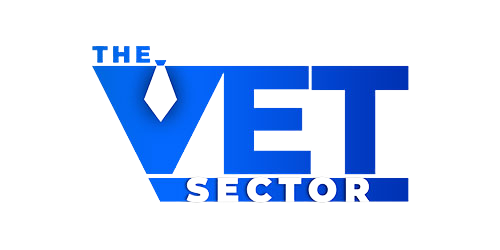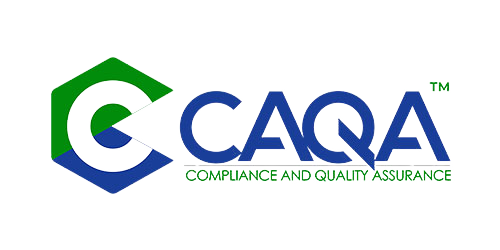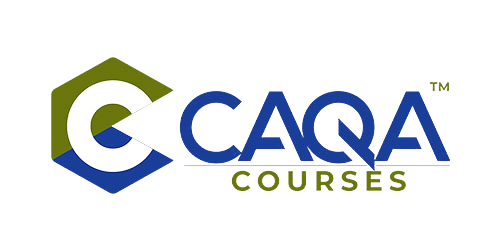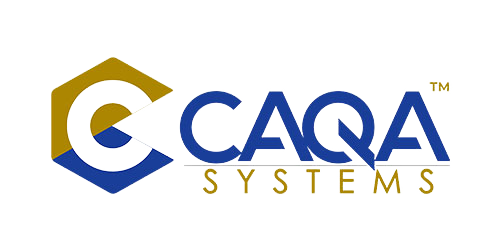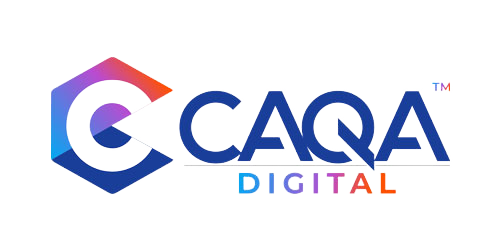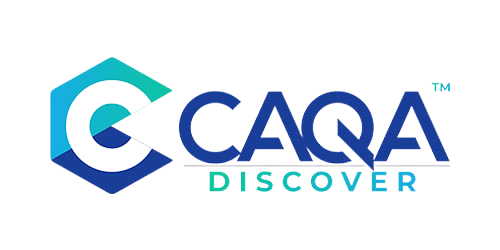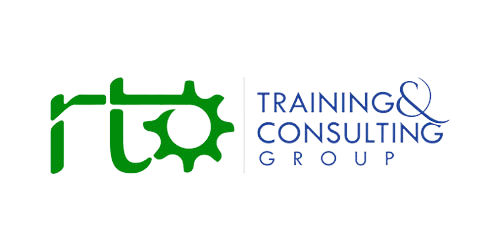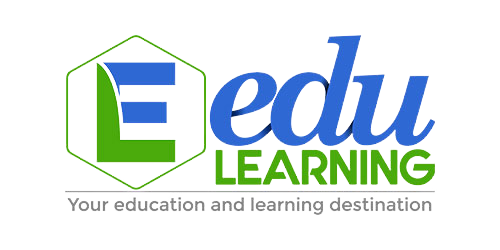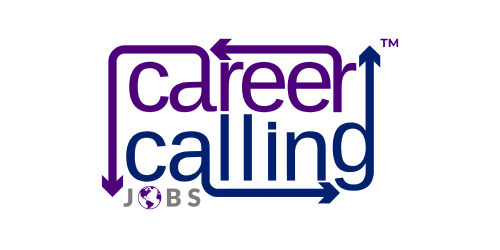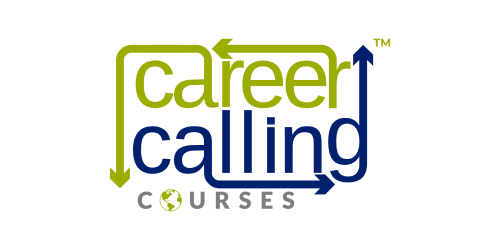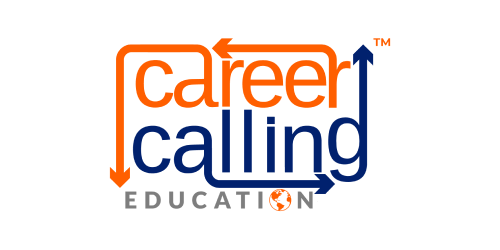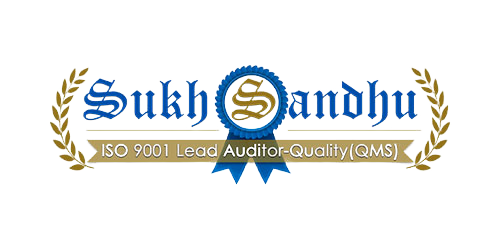Paedagogy, often described as the science, art, and craft of teaching and learning, is a cornerstone of any education system. In Vocational Education and Training (VET), paedagogy plays an especially pivotal role. VET focuses on preparing learners for specific careers and occupations, requiring teaching methodologies and learning experiences that closely mirror real-world workplaces. This article explores the core principles of pedagogy in VET, illustrating why paedagogy is critical in shaping the modern workforce, examines the historical evolution of pedagogical thought, and addresses the future challenges and directions of VET paedagogy in a changing world.
|
Pedagogy, broadly defined as the method and practice of teaching, plays a crucial role in Vocational Education and Training (VET). VET is a unique educational sector that focuses on providing specific skills and knowledge required for particular occupations or trades. The pedagogical approaches used in VET are distinct from those employed in traditional academic settings due to the practical nature of the skills being taught. |
The core principles of paedagogy in VET are rooted in the unique nature of vocational education itself. Unlike traditional academic education, VET emphasises practical skills, hands-on experience, and industry-specific knowledge. As such, VET pedagogy must strike a delicate balance between theoretical understanding and practical application. This balance is achieved through various instructional methods, including:
1. Work-based learning: Integrating on-the-job training and classroom instruction to provide students with real-world experience.
2. Competency-based education: Focusing on measurable skills and outcomes rather than time spent in a classroom.
3. Project-based learning: Engaging students in complex, real-world projects that require critical thinking and problem-solving skills.
4. Simulations and role-playing: Creating realistic scenarios that mimic workplace situations and challenges.
5. Collaborative learning: Encouraging teamwork and communication skills essential in modern workplaces.
The importance of pedagogy in shaping the modern workforce cannot be overstated. As industries evolve rapidly due to technological advancements and changing market demands, the ability to adapt and learn new skills becomes crucial. Effective VET pedagogy equips learners with job-specific skills and meta-skills such as critical thinking, adaptability, and lifelong learning. These skills are essential for workers to navigate the ever-changing landscape of the 21st-century job market.
The historical evolution of pedagogical thought in VET reflects broader changes in educational philosophy and societal needs. In the early 20th century, VET was primarily focused on apprenticeship models and rote learning of trade skills. As industrialisation progressed, the need for a more standardised and efficient approach to vocational training led to the development of systematic instructional methods.
The mid-20th century saw a shift towards cognitive approaches in education, emphasising problem-solving and critical thinking. This influenced VET pedagogy, leading to a greater focus on transferrable skills and adaptability. The late 20th and early 21st centuries brought about a renewed emphasis on experiential learning and the integration of technology in education, shaping modern VET pedagogical practices.
Looking towards the future, VET pedagogy faces several challenges and opportunities:
1. Technological integration: As industries become increasingly digitised, VET must incorporate emerging technologies into its curriculum and teaching methods. This includes virtual and augmented reality for simulations, artificial intelligence for personalised learning, and big data analytics for skills forecasting.
2. Sustainability and green skills: With growing concerns about climate change, VET pedagogy must adapt to include sustainable practices and green skills across various industries.
3. Globalisation: As workforces become more international, VET pedagogy needs to address cross-cultural competencies and global perspectives.
4. Lifelong learning: With rapid technological change, the concept of a single, lifelong career is becoming obsolete. VET pedagogy must evolve to support continuous learning and reskilling throughout an individual's working life.
5. Soft skills development: While technical skills remain crucial, employers increasingly value soft skills such as communication, teamwork, and emotional intelligence. VET pedagogy must find ways to effectively teach and assess these less tangible skills.
6. Remote and hybrid learning: The COVID-19 pandemic has accelerated the adoption of online and hybrid learning models. VET pedagogy must adapt to deliver practical, hands-on training in these new learning environments.
Pedagogy in Vocational Education and Training plays a crucial role in preparing the workforce of today and tomorrow. By continuously evolving to meet the changing needs of industries and learners, VET pedagogy can ensure that vocational education remains relevant, effective, and transformative in the years to come. As we navigate the complexities of the 21st-century job market, the importance of innovative and adaptive pedagogical approaches in VET cannot be underestimated.
The Concept of Pedagogy in VET
Pedagogy in VET involves designing, implementing, and evaluating learning experiences that cultivate practical skills, industry-aligned competencies, and professional mindsets among students. Unlike general education, where broad academic knowledge might take precedence, VET is more narrowly focused on workforce preparation. Nonetheless, this narrower focus does not negate the depth or complexity of effective pedagogy within the sector. Instead, it demands a nuanced and adaptive approach that helps students internalise workplace realities while developing a holistic understanding of their chosen field.
Central to VET pedagogy is the emphasis on authenticity. Learners are not merely memorising theoretical content; they are engaging in tasks and problem-solving activities that simulate actual occupational scenarios. These activities foster practical understanding and direct application of skills. VET teachers must be adept at blending theory and practice, ensuring that students grasp both the conceptual underpinnings of their work and the hands-on techniques necessary for excellence in the workplace.
Pedagogy in VET also encompasses learner-centred approaches that prioritise active participation, reflection, and continuous feedback. By nurturing critical thinking and adaptability, educators equip students to navigate ever-changing industry demands. Competency-based frameworks often shape the assessment protocols, allowing learners to progress once they have demonstrated the specified skill sets. Ultimately, robust VET pedagogy is the engine that drives the development of work-ready graduates, fueling both individual career success and broader economic growth.
Key Principles of VET Pedagogy
Vocational Education and Training (VET) pedagogy is a complex and multifaceted approach to education that aims to prepare learners for specific industries and occupations. It is guided by several core principles that ensure students acquire the skills, knowledge, and competencies necessary for their chosen fields. These principles work in concert to create a comprehensive learning experience that bridges the gap between academic knowledge and practical workplace skills.
One of the most defining principles of VET pedagogy is authenticity, which emphasises the critical importance of real-world learning experiences. Authentic tasks are designed to mirror workplace environments and duties, enabling students to deepen their skills by engaging in complex activities that require problem-solving, collaboration, and decision-making. This approach is particularly crucial in sectors such as hospitality, construction, healthcare, and information technology, where competency in managing real-world intricacies directly impacts professional success.
VET educators ensure authenticity by designing tasks that replicate real-world challenges, encouraging peer dialogue through collaborative projects, and integrating multiple skill areas. For example, an automotive student may be tasked with diagnosing and repairing a vehicle with multiple faults, simulating the real-world troubleshooting process they would encounter in a professional garage. Similarly, a culinary arts student might be required to plan, prepare, and serve a multi-course meal for real customers, mirroring the pressures and complexities of a working kitchen.
Industry partnerships play a crucial role in reinforcing authentic learning. By collaborating with local businesses and organisations, VET institutions can provide students with access to current industry practices, state-of-the-art equipment, and real-world projects. These partnerships often lead to internships, apprenticeships, and work placements, further enhancing the authenticity of the learning experience.
Adaptive technology integration is another key aspect of authentic learning in VET. As industries evolve and adopt new technologies, VET programs must keep pace to ensure students are familiar with the tools and systems they will encounter in the workplace. This might involve the use of virtual reality simulations for safety training in construction or advanced diagnostic equipment in automotive programs.
Continuous assessment is an integral part of authentic learning in VET. Rather than relying solely on traditional exams, educators use a variety of assessment methods that reflect real-world performance indicators. This might include practical demonstrations, project portfolios, peer evaluations, and workplace supervisor feedback. These diverse assessment strategies provide a more holistic view of a student's capabilities and readiness for the workforce.
Entrepreneurial skills development is increasingly recognised as a vital component of VET pedagogy. Many industries require not only technical proficiency but also the ability to manage projects, communicate effectively with clients, and understand basic business principles. VET programs often incorporate modules on entrepreneurship, project management, and small business operations to prepare students for the realities of self-employment or small business management within their chosen fields.
Alignment is another fundamental principle of VET pedagogy, ensuring that all educational components—learning outcomes, assessments, activities, and the learning environment—are structured to support a unified goal. This principle is crucial for creating a coherent and effective learning experience that directly translates to workplace competence.
Effective alignment prevents gaps in competency by coordinating learning outcomes with vocational standards, designing assessments that accurately measure relevant skills, and fostering collaboration among educators to maintain consistency across different modules or courses. For instance, in a construction program, the theoretical understanding of building codes taught in one module should align with the practical application of these codes in hands-on projects in another module.
When alignment is well-executed, students can seamlessly integrate theoretical knowledge with practical applications, leading to a clearer progression from novice to skilled practitioner. This integration is particularly important in fields where theory and practice are closely intertwined, such as engineering or healthcare.
A learner-centred approach is integral to VET pedagogy, recognising the diverse backgrounds, skills, and motivations of students. This approach actively involves learners in their education through workshops, simulations, role-plays, and team projects. By placing the learner at the centre of the educational process, VET programs can better accommodate different learning styles and paces, leading to more effective skill acquisition and retention.
Hands-on practice is a cornerstone of the learner-centred approach in VET. It fosters a deeper understanding of vocational skills by allowing students to physically engage with the tools, materials, and processes of their chosen trade. This tactile learning experience is particularly valuable in fields such as manufacturing, agriculture, or beauty therapy, where manual dexterity and sensory awareness are crucial.
Continuous reflection and feedback loops are essential components of the learner-centred approach. Students are encouraged to regularly assess their own progress, identify areas for improvement, and set personal learning goals. This self-reflection is complemented by frequent feedback from instructors, peers, and industry mentors, creating a dynamic learning environment that enhances competency development and instils a sense of ownership over learning.
Competency-based learning is another key framework in VET pedagogy, focusing on the acquisition and demonstration of specific competencies aligned with industry standards. This approach establishes clear learning objectives, ensuring students understand what is expected of them and how their skills will be assessed.
In a competency-based model, learners advance upon demonstrating competence in practical assessments that replicate workplace procedures rather than progressing based on time spent in class. This allows for a more flexible and personalised learning journey, where students can move quickly through areas they master easily while spending more time on challenging concepts or skills.
The competency-based approach aligns well with employer expectations, producing graduates who are job-ready and capable of performing industry-recognized tasks. It also facilitates the recognition of prior learning and experience, allowing students to receive credit for skills they have already mastered, whether through previous education, work experience, or personal pursuits.
The integration of theory and practice is a critical aspect of VET pedagogy. While practical skills are essential, theoretical knowledge underpins professional expertise by enabling troubleshooting, adaptability, and informed decision-making. To achieve this balance, educators contextualise theoretical content through real-world examples, apply concepts in practical projects, and encourage reflective discussions to bridge conceptual understanding with job-specific tasks.
For example, in a plumbing program, students might learn the physics principles behind water pressure and flow rates and then immediately apply this knowledge in a practical pipe-fitting exercise. This integration helps students understand not just how to perform tasks but why certain methods are used and how to adapt their skills to different situations.
Work-integrated learning, such as apprenticeships and industry placements, further enhances skill development by providing authentic workplace exposure. These experiences allow students to apply their learning in real work environments, develop professional networks, and gain a deeper understanding of industry culture and expectations.
Flexible delivery methods, including online, blended, and modular learning, accommodate diverse student needs and schedules, ensuring accessibility. This flexibility is particularly important for mature students who may be balancing study with work or family commitments. Online resources and virtual learning environments can supplement traditional classroom and workshop instruction, providing students with additional opportunities to reinforce their learning and practice skills.
Industry alignment is another critical element of VET pedagogy, with curricula and teaching strategies closely matching workforce demands to produce job-ready graduates. This alignment is achieved through regular consultation with industry advisory boards, continuous updating of course content to reflect technological advancements and changing work practices, and the involvement of industry professionals in curriculum development and delivery.
Finally, adult learning principles are embedded in VET pedagogy, catering to mature learners through self-directed learning opportunities and recognition of prior experience. These principles acknowledge that adult learners bring a wealth of life and work experience to their studies, have specific learning goals tied to career aspirations, and prefer learning that is immediately applicable to their lives.
By embracing these principles—authenticity, alignment, learner-centeredness, competency-based learning, theory-practice integration, work-integrated learning, flexible delivery, industry alignment, and adult learning principles—VET educators cultivate a workforce that is not only technically proficient but also adaptable, critically thinking, and prepared to meet the evolving demands of their industries. This comprehensive approach to vocational education ensures that graduates are well-equipped to contribute meaningfully to their chosen fields from day one while also laying the foundation for lifelong learning and career advancement.
The Importance of Pedagogy in VET
Pedagogy in Vocational Education and Training: A Cornerstone of Workforce Development
Pedagogy is not a mere academic exercise; it is the driving force that shapes the quality and relevance of vocational programs. The importance of robust pedagogical practices in the Vocational Education and Training (VET) sector cannot be overstated. It serves as the foundation upon which effective skill development, industry relevance, and learner success are built. Below are key reasons why robust paedagogy is crucial in the VET sector, along with an exploration of its multifaceted impact on learners, industries, and society at large.
1. Skill Development:
Proper pedagogical approaches ensure that students acquire the necessary skills and competencies required for their chosen vocations. This goes beyond the mere transmission of knowledge; it involves the careful design of learning experiences that allow students to practice and refine their skills in realistic contexts. For instance, a welding program might incorporate virtual reality simulations to allow students to practice their technique safely before working with actual equipment. This hands-on approach, guided by sound pedagogical principles, ensures that students develop not just theoretical knowledge but practical, applicable skills.
2. Employability:
Effective VET pedagogy enhances students' employability by providing them with practical, industry-relevant skills. This involves more than just technical proficiency; it includes the development of soft skills such as communication, teamwork, and problem-solving. For example, a culinary arts program might include group projects where students must work together to plan, prepare, and present a multi-course meal, mirroring the collaborative nature of a professional kitchen. By integrating these real-world scenarios into the curriculum, VET pedagogy prepares students for the multifaceted demands of their future workplaces.
3. Learner Engagement:
Appropriate teaching methods increase student engagement and motivation, leading to better learning outcomes. This is particularly crucial in VET, where many students may have had negative experiences with traditional academic settings. Innovative pedagogical approaches, such as project-based learning or gamification, can reignite a passion for learning. For instance, an automotive repair course might use a competitive element where students work in teams to diagnose and fix a series of increasingly complex mechanical issues, turning the learning process into an engaging challenge.
4. Industry Relevance:
Strong pedagogical practices ensure that VET programs remain up-to-date with industry needs and technological advancements. This requires a dynamic approach to curriculum development, with regular input from industry partners. For example, a digital marketing program might incorporate real-time case studies of current social media campaigns, analysing their effectiveness and discussing emerging trends. This approach ensures that students are learning skills that are immediately applicable in the rapidly evolving job market.
5. Lifelong Learning:
Effective VET pedagogy instils a mindset of continuous learning, essential for career progression in rapidly evolving industries. This involves teaching students not just specific skills but also how to learn and adapt to new technologies and methodologies. For instance, an IT networking course might include modules on researching and evaluating new technologies, encouraging students to stay abreast of industry developments even after they complete their formal education.
6. Economic Impact:
By producing skilled workers, effective VET pedagogy contributes to economic growth and productivity. This impact extends beyond individual career success to benefit entire industries and national economies. For example, a well-designed manufacturing program that incorporates the latest in automation and robotics can help address skills shortages in advanced manufacturing, supporting the growth of this crucial sector.
7. Social Inclusion:
Proper pedagogical approaches in VET can help address issues of social inclusion by providing accessible pathways to meaningful employment for diverse groups of learners. This might involve tailoring teaching methods to accommodate different learning styles, cultural backgrounds, or physical abilities. For instance, a construction program might use multi-lingual instruction or visual learning aids to support students from non-English speaking backgrounds, ensuring that language barriers don't prevent talented individuals from entering the industry.
Enhancing Learning Outcomes
Well-designed pedagogical approaches can dramatically boost learning outcomes among VET students. When teaching strategies align with vocational realities, learners become more engaged, which translates into:
1. Increased Motivation:
Authentic tasks connect directly to career goals, heightening students' drive to learn. For example, a hospitality management program might partner with local hotels to allow students to shadow managers, giving them a tangible glimpse of their future careers and motivating them to master the skills they'll need.
2. Depth of Understanding:
Active, hands-on exercises encourage deeper cognitive processing and conceptual retention. Rather than simply memorising facts, students in a horticulture program might design and maintain a real garden throughout their course, allowing them to understand plant biology, soil science, and landscaping principles in a practical, interconnected way.
3. Critical and Creative Thinking:
By solving realistic problems, students refine their analytical and decision-making skills. A business administration course might present students with complex case studies of real companies facing challenges, asking them to analyse the situation, propose solutions, and defend their recommendations.
4. Long-Term Retention:
Applied learning ensures that knowledge is retained beyond examinations and readily recalled in workplace contexts. For instance, an electrical engineering program might use spaced repetition techniques, revisiting key concepts throughout the course in different practical applications to ensure that critical knowledge becomes deeply ingrained.
Preparing Work-Ready Graduates
A central goal of VET is producing "work-ready" graduates who can transition smoothly into professional roles. Pedagogy supports this aim by:
1. Aligning Skills to Industry Needs:
Competency-based curricula ensure that the student's skill set directly matches employer demands. This might involve regular consultations with industry advisory boards to update course content and assessment methods. For example, a graphic design program might adjust its curriculum to include emerging technologies like augmented reality based on feedback from leading design firms.
2. Developing Professional Dispositions:
Group projects, deadlines, and quality standards mimic workplace expectations. A journalism program, for instance, might operate a student-run news website with strict publishing deadlines and editorial standards, simulating the pressures and responsibilities of a real newsroom.
3. Nurturing Adaptability:
Real-world simulations and creative problem-solving tasks cultivate flexibility in dynamic job settings. An emergency services training program might use virtual reality scenarios that change unpredictably, forcing students to adapt their responses in real-time, much as they would need to do in actual emergency situations.
4. Enhancing Employability:
Students graduate with tangible evidence of mastered competencies, bolstering their job prospects. This might involve the creation of professional portfolios, industry certifications, or capstone projects that demonstrate a student's capabilities to potential employers.
Improving the Quality and Status of VET
Despite its indispensable role in workforce development, VET has often struggled to command the same prestige as higher education pathways. However, emphasising pedagogy can help bridge this gap by:
1. Showcasing Academic Rigor:
Thoughtful teaching strategies reveal VET's complexity and intellectual demands. For example, a mechatronics program might highlight how students integrate principles from mechanical engineering, electronics, and computer science to solve complex automation challenges.
2. Attracting Skilled Instructors:
A robust pedagogical culture draws educators who value innovative teaching. This might involve creating professional development opportunities for VET instructors to continually refine their teaching skills and stay current with industry trends.
3. Elevating Public Perception:
Demonstrating high-quality learning experiences enhances VET's reputation as a serious, professional option. This could include public showcases of student work, open days where the community can observe state-of-the-art training facilities, or media campaigns highlighting the sophisticated skills developed in VET programs.
4. Highlighting Individual Success Stories:
Showcasing successful graduates underscores the transformative power of good VET pedagogy. This might involve creating alumni networks, organising career talks by graduates, or featuring success stories in marketing materials to inspire potential students and change public perceptions.
Adapting to Changing Work Environments
In an era where industries evolve rapidly, VET pedagogy must be agile and forward-thinking. Solid pedagogical frameworks ensure that:
1. Emerging Technologies:
Teachers integrate digital tools and up-to-date methods into the classroom. For instance, a fashion design program might incorporate 3D modelling software and digital textile printing alongside traditional pattern-making techniques, preparing students for the increasingly tech-driven fashion industry.
2. Lifelong Learning:
Learners develop the mindset to continually upskill or reskill as needed in fast-shifting sectors. This might involve teaching meta-learning strategies, helping students understand how they learn best and how to acquire new skills efficiently throughout their careers.
3. Transferrable Competencies:
Critical thinking, communication, and team collaboration transcend any single occupation. A healthcare assistant program, for example, might include modules on intercultural communication and conflict resolution, skills that are valuable across various healthcare settings and beyond.
4. Resilience and Adaptability:
Problem-based tasks simulate unpredictable workplace challenges, preparing students for real-world complexities. An agriculture program might present students with scenarios involving changing climate conditions or market fluctuations, challenging them to develop flexible farming strategies.
Robust pedagogy in VET is not just about effective teaching; it's about creating a dynamic, responsive educational ecosystem that prepares learners for the complexities of modern workplaces. By prioritising pedagogical excellence, VET institutions can enhance student outcomes, meet industry needs, and contribute significantly to economic and social development. As the world of work continues to evolve at an unprecedented pace, the role of thoughtful, innovative pedagogy in vocational education and training becomes ever more crucial in shaping a skilled, adaptable, and resilient workforce for the future.
The History and Evolution of Pedagogy
Pedagogy’s current form, including its application in VET, has been shaped by centuries of philosophical, social, and cultural developments. Tracing the historical journey of pedagogy provides a broader context for understanding its integral role in vocational training today.
Origins in Ancient Civilisations
The word “pedagogy” is derived from the Greek term “paidagogos,” referring to a slave responsible for guiding a child to school. In ancient Greece, formal learning was often reserved for the elite, yet the philosophical foundations laid by prominent thinkers had a lasting impact on education. Early Greek paedagogy emphasised rhetoric, logic, and dialogue—tenets that continue to resonate in modern teaching. Ancient Rome further adapted Greek educational theories, weaving them into broader systems of schooling that combined rhetoric with practical knowledge.
Classical Greek Influence
Renowned Greek philosophers profoundly shaped early pedagogical theories, laying the groundwork for educational practices that continue to resonate in modern times:
Socrates (470–399 BCE): The Socratic method, a cornerstone of his approach, fostered critical thinking through targeted questioning. This technique encouraged learners to clarify and refine their own ideas, promoting active engagement and self-reflection. By challenging assumptions and probing deeper into concepts, Socrates aimed to cultivate wisdom and intellectual humility. His approach emphasised the importance of dialogue and the pursuit of truth through rigorous examination of beliefs.
Plato (428/427–348/347 BCE): In seminal works like The Republic, Plato proposed a comprehensive education system aimed at creating well-rounded guardians for his ideal society. He highlighted the importance of moral development alongside intellectual pursuits, believing that a truly educated person should possess both knowledge and virtue. Plato's curriculum included subjects such as mathematics, astronomy, harmonics, and dialectics, which he believed would train the mind to grasp abstract concepts and ultimate truths. His concept of the philosopher-king underscored the idea that education was crucial for effective leadership and governance.
Aristotle (384–322 BCE): As a student of Plato and a tutor to Alexander the Great, Aristotle developed his own distinct educational philosophy. Believing in a common education for citizens, he advocated for blending physical education and intellectual cultivation to form balanced individuals. Aristotle emphasised the importance of habit formation in education, arguing that virtues are acquired through practice and repetition. His approach was more empirical than his predecessors, focusing on observation and categorisation of the natural world. Aristotle's writings on logic, ethics, politics, and natural sciences formed the basis of the classical education model that persisted for centuries.
While these classical paradigms were not explicitly vocational in nature, they established fundamental principles that continue to influence modern pedagogical approaches. The value of guided inquiry, structured learning, and the cultivation of virtue remains central to many educational philosophies today.
The legacy of these Greek thinkers extended far beyond their immediate context. Their ideas were preserved and transmitted through the ages, influencing Roman education, mediaeval scholasticism, Renaissance humanism, and Enlightenment thought. The concept of a liberal arts education, emphasising broad knowledge and critical thinking skills, can be traced back to these classical roots.
Moreover, these philosophers' emphasis on the ethical dimension of education continues to inform debates about the purpose and content of schooling. Questions about how to balance intellectual development with character formation, how to foster critical thinking and civic responsibility, and how to prepare individuals for both personal fulfilment and societal contribution all have their antecedents in the work of Socrates, Plato, and Aristotle.
In the modern era, educational theorists and practitioners continue to draw inspiration from these ancient thinkers. The Socratic method, for instance, has been adapted into various forms of inquiry-based learning. Plato's vision of a comprehensive and rigorous curriculum finds echoes in contemporary arguments for a well-rounded education. Aristotle's emphasis on habit formation and practical wisdom resonates with current interest in social-emotional learning and character education.
As we navigate the challenges of 21st-century education, including the integration of technology, the demands of a global economy, and the need for sustainable development, the enduring insights of these Greek philosophers provide a valuable touchstone. They remind us that at its core, education is about more than just imparting information—it's about shaping minds, cultivating virtues, and preparing individuals to engage thoughtfully and ethically with the world around them.
Roman Contributions
In Rome, the adaptation of Greek educational methods led to significant advancements in paedagogy, shaping the foundations of Western education for centuries to come. Two notable figures who contributed to this evolution were Quintilian and Tertullian.
Quintilian (35–100 CE), a renowned Roman rhetorician and teacher, made substantial contributions to educational theory in his seminal work, Institutio Oratoria. This comprehensive treatise on rhetoric and education framed learning as a gradual, carefully guided process that emphasised the crucial role of the teacher in both the moral and intellectual development of students. Quintilian advocated for a holistic approach to education, stressing the importance of tailoring instruction to individual students' needs and abilities. He also emphasised the value of starting education early in a child's life and maintaining a positive, encouraging learning environment.
Quintilian's ideas were revolutionary for his time and continue to influence modern educational practices. His emphasis on the teacher as a moral guide and intellectual mentor resonates with contemporary views on the importance of positive teacher-student relationships in fostering academic success and personal growth.
Tertullian (155–240 CE), on the other hand, represented a shift in educational philosophy that occurred as Christianity began to spread throughout the Roman Empire. As an early Christian author and apologist, Tertullian advocated for a religiously oriented education that integrated Christian teachings into the traditional Roman curriculum. This approach reflected the period's gradual transition from classical pagan learning towards a Christian-centred educational model.
Tertullian's contributions to educational thought included emphasising the importance of moral instruction alongside intellectual pursuits. He argued that education should not only impart knowledge but also shape character and instil Christian virtues. This perspective would later become a cornerstone of mediaeval European education, particularly in monastic schools and early universities.
While Quintilian's and Tertullian's approaches differed in content and religious orientation, both emphasised the importance of structured, purposeful instruction. They shared a belief in the power of education to shape not just the mind but also the character of students. This focus on systematic, goal-oriented learning resonates strongly with the principles underlying modern competency-based Vocational Education and Training (VET) programs.
In contemporary VET, we see echoes of these ancient Roman educational philosophies. The emphasis on practical skills development, guided instruction, and the integration of moral or professional ethics alongside technical knowledge all have roots in these early pedagogical approaches. Moreover, the idea of education as a transformative process that prepares individuals for specific roles in society—whether as orators in ancient Rome or skilled professionals in the modern workforce—remains a central tenet of educational systems worldwide.
The legacy of these Roman educational innovations continues to influence our understanding of effective teaching and learning methods, demonstrating the enduring relevance of these ancient insights in shaping modern educational practices.
Medieval and Renaissance Developments
Throughout the Middle Ages and the Renaissance, education underwent significant transformations, largely influenced by religious institutions and evolving philosophical ideals. The period saw a shift from the classical education systems of antiquity to a more religiously oriented approach, with monastic and cathedral schools becoming the primary centres of learning. These institutions focused heavily on doctrinal teaching, emphasising the study of scripture, theology, and religious texts.
Despite this religious focus, several notable figures made important contributions to educational theory and practice during this time:
Saint Jerome (347–420 CE) was a key figure in advancing methodologies for training clergy. His work set important precedents for specialised instruction, particularly in the areas of biblical exegesis and language study. Jerome's Latin translation of the Bible, known as the Vulgate, became a central text in medieval education and greatly influenced the development of Western Christianity and scholarship.
Jean Charlier de Gerson (1363–1429), a French scholar and theologian, promoted a more compassionate and child-centred approach to education. He emphasised the importance of understanding learners' needs and capacities, advocating for gentler teaching methods that considered the psychological and emotional development of students. Gerson's ideas were revolutionary for his time and laid the groundwork for more humanistic approaches to education in later centuries.
The Renaissance period saw the emergence of Humanism, a philosophical and educational movement that would profoundly impact European thought and culture. Renaissance Humanism, pioneered by figures such as Desiderius Erasmus and Vittorino da Feltre, placed a renewed emphasis on classical learning and the well-rounded development of the individual. This approach, known as studia humanitatis, included the study of grammar, rhetoric, history, poetry, and moral philosophy, with a particular focus on Greek and Latin classics.
Erasmus, a Dutch humanist scholar, stressed the importance of early childhood education and advocated for a curriculum that balanced intellectual, moral, and physical development. His works, such as "De Pueris Instituendis" (On the Education of Children), influenced educational thought throughout Europe.
Vittorino da Feltre established his famous school, the Casa Giocosa (House of Joy), in Mantua, Italy. This institution embodied humanist educational ideals, providing a broad liberal arts education that included physical education alongside academic subjects. Da Feltre's approach emphasised the cultivation of virtue and character alongside intellectual pursuits.
While formal education during this era was primarily available to the nobility and clergy, the humanist movement began to challenge this exclusivity. Some humanists, like Juan Luis Vives, argued for the education of women and the poor, though these ideas were slow to gain widespread acceptance.
Vocational training during the Middle Ages and Renaissance was largely confined to the guild system and apprenticeships. Young people would learn trades and crafts through hands-on experience under the tutelage of master craftsmen. This practical approach to education ensured the transmission of skills and knowledge in various trades and professions.
The printing press, invented by Johannes Gutenberg around 1440, revolutionised the dissemination of knowledge and had a profound impact on education. The increased availability of books made self-study more accessible and contributed to the spread of humanist ideas.
By the end of the Renaissance, the idea that education could be broad-based and learner-oriented had taken root. This shift laid the foundation for future educational reforms and the eventual development of modern educational systems. The emphasis on individual development, critical thinking, and a well-rounded curriculum would continue to influence educational philosophy in the centuries to come.
Modern Foundations (17th–19th Centuries)
Pedagogy, the art and science of teaching, began to take shape as a formal academic discipline during the 17th to 19th centuries. This period saw the emergence of several influential thinkers who laid the foundation for modern educational theory and practice.
John Amos Comenius (1592–1670) is often regarded as the father of modern education. A Czech philosopher and pedagogue, Comenius championed the revolutionary idea of universal education, asserting that all children, regardless of gender or social status, should have access to learning. He wrote "Orbis Sensualium Pictus" (The Visible World in Pictures), considered the first illustrated textbook for children. This work pioneered the use of visual aids in education, recognising the power of images in facilitating learning. Comenius also advocated for a system of education that was comprehensive and integrated, spanning from early childhood to university level.
Jean-Jacques Rousseau (1712–1778), a Swiss-born philosopher, made significant contributions to educational theory through his seminal work "Emile, or On Education." Rousseau proposed a radical shift in educational thinking, emphasising the importance of educating children in harmony with their natural interests and developmental stages. He argued against the prevailing methods of rote learning and strict discipline, instead advocating for experiential and child-centred approaches. Rousseau's ideas laid the groundwork for progressive education movements in the centuries that followed.
Johann Heinrich Pestalozzi (1746–1827), a Swiss pedagogue, further developed these child-centred approaches. He is famous for promoting the concept of "learning by head, hand, and heart," which underscored a holistic approach to education. Pestalozzi believed that effective learning involved not just intellectual development but also physical and emotional growth. His methods emphasised hands-on experiences, observation, and the development of moral character alongside academic knowledge. This comprehensive approach to education resonates strongly with modern skills-based pedagogy, particularly in vocational education and training (VET) settings.
Johann Friedrich Herbart (1776–1841) is often considered the founder of pedagogy as an academic discipline. A German philosopher and psychologist, Herbart believed that education could be studied scientifically, applying rigorous methods of observation and analysis to understand how learning occurs. He developed a systematic approach to education, emphasising the importance of preparing lessons in a structured manner and building new knowledge upon existing understanding. Herbart's work paved the way for structured teacher training programs and the professionalisation of teaching.
These thinkers, among others, contributed to a growing body of knowledge about effective teaching and learning practices. Their ideas challenged the traditional, often rigid educational methods of their time, promoting more student-centred, experiential, and scientifically informed approaches.
As the field of paedagogy continued to evolve, it drew insights from various disciplines such as psychology, sociology, and, later, cognitive science. The 20th century saw further developments with the emergence of educational psychologists like Jean Piaget and Lev Vygotsky, who deepened our understanding of cognitive development and social learning.
The groundwork laid during this formative period of paedagogy as an academic discipline has had a lasting impact on educational theory and practice. Many of the principles established by these early thinkers continue to influence modern educational approaches, including the competency-based models often employed in vocational education and training (VET). These models, which focus on developing specific skills and abilities, can be seen as an evolution of the holistic, experiential learning advocated by figures like Pestalozzi and Rousseau.
The formalisation of pedagogy as an academic discipline during the 17th to 19th centuries marked a crucial turning point in the history of education. It set the stage for more structured, scientific approaches to teaching and learning while also emphasising the importance of considering the whole child in the educational process. These foundational ideas continue to shape educational practices and reforms to this day.
20th Century and Beyond
The 20th century ushered in a series of revolutionary changes in educational theory and practice, profoundly influencing the landscape of pedagogy and shaping modern approaches to Vocational Education and Training (VET).
John Dewey (1859–1952) emerged as a pivotal figure in this transformation. His philosophy emphasised experiential learning, problem-solving, and reflective thought, principles that continue to exert a strong influence on modern VET practices. Dewey argued that education should be grounded in real-life experiences, advocating for hands-on learning and practical application of knowledge. This approach resonated particularly well with vocational education, where the connection between theory and practice is paramount.
Constructivist theories, primarily developed by Jean Piaget and Lev Vygotsky, represented another significant shift in educational thinking. These theories reframed learning as an active social process rather than a passive absorption of information. Piaget's cognitive constructivism focused on how individuals construct knowledge through their experiences and interactions with the environment. Vygotsky's social constructivism emphasised the role of social interaction and culture in cognitive development. In the context of VET, these theories underscored the importance of collaborative learning, peer interaction, and the integration of new knowledge with existing skills and experiences.
Paulo Freire's introduction of critical pedagogy in the latter half of the 20th century brought a new dimension to educational discourse. Freire's approach centred on dialogue and empowerment, suggesting that education should foster critical consciousness. He argued against the traditional "banking" model of education, where students are viewed as empty vessels to be filled with knowledge. Instead, Freire advocated for a problem-posing education that encourages learners to question, challenge, and transform their reality. In VET, this translates to developing not just technical skills but also the ability to critically analyse workplace practices, industry trends, and societal impacts of one's vocation.
The late 20th and early 21st centuries witnessed the proliferation of digital technologies and the concept of lifelong learning. This era saw a shift towards technology-based learning, self-directed education, and continuous professional development. E-learning platforms, massive open online courses (MOOCs), and digital simulations have revolutionised the delivery of vocational training, making it more accessible and adaptable to changing industry needs. The emphasis on lifelong learning acknowledges that in a rapidly evolving job market, the acquisition of skills and knowledge is an ongoing process that extends beyond formal education.
These pedagogical shifts have had a profound impact on VET, highlighting that vocational learning is far more than mere rote skill acquisition. Modern VET incorporates cognitive processes, reflective practices, ethical considerations, and the ability to continuously adapt. It recognises that quality vocational teaching must foster not only technical proficiency but also critical thinking, problem-solving abilities, and adaptability.
Furthermore, these pedagogical approaches have influenced the design of VET curricula and assessment methods. Project-based learning, work-integrated learning, and competency-based assessment have become increasingly prevalent, aligning with constructivist principles and Dewey's emphasis on experiential learning. Critical pedagogy has inspired the inclusion of ethics and social responsibility in vocational courses, encouraging students to consider the broader implications of their work.
The integration of digital technologies in VET has not only changed delivery methods but also the content of many vocational programs. As industries become increasingly digitised, VET has had to adapt to prepare students for technologically advanced workplaces. This has led to the emergence of new fields of study and the constant updating of existing curricula to keep pace with technological advancements.
The pedagogical shifts of the 20th century have fundamentally reshaped VET, transforming it into a dynamic, learner-centred approach that prepares individuals not just for specific jobs but for adaptable, thoughtful participation in a rapidly changing workforce. As we move further into the 21st century, these principles continue to evolve, ensuring that VET remains responsive to the needs of both learners and the industries they will enter.
Pedagogy in Ancient India:
Ancient Indian Education and Learning Traditions
The educational traditions of ancient India are a testament to the civilisation's rich cultural and intellectual heritage, dating back several millennia. The pedagogical approach in ancient India was deeply intertwined with spiritual and philosophical traditions, emphasising the holistic development of an individual - not just intellectually but also morally, spiritually, and physically.
The Guru-Shishya System
At the heart of ancient Indian pedagogy was the Guru-Shishya (teacher-student) system. This unique educational model involved a close, personal relationship between the teacher (guru) and the student (shishya). Unlike modern educational systems, where students typically attend classes and return home, the Guru-Shishya system often required students to live with their gurus in ashrams or gurukulas. These were essentially residential schools, usually located in serene forest areas away from the hustle and bustle of cities.
The rationale behind this setup was multifaceted:
1. Immersive learning: By living with their guru, students could observe and imbibe knowledge not just during formal teaching hours but throughout their daily lives.
2. Character building: The ashram environment provided opportunities for students to develop discipline, humility, and other virtuous qualities.
3. Practical skills: Students also participated in the day-to-day running of the ashram, learning practical life skills alongside their academic pursuits.
4. Personalised attention: The close proximity allowed gurus to understand each student's strengths and weaknesses, tailoring their teaching accordingly.
Teaching Methods in Ancient India
The pedagogical methods employed in ancient India were diverse and sophisticated:
1. Oral tradition: The primary mode of knowledge transmission was through oral recitation and memorisation. This method, known as "Shruti" (that which is heard), was particularly important for preserving the Vedas and other sacred texts. Students would spend years memorising these texts verbatim, often using mnemonic techniques and rhythmic chanting to aid retention.
2. Debate and discussion: Known as "Shastrartha," intellectual debates were a crucial part of the learning process. Students were encouraged to question, argue, and defend their viewpoints, which helped sharpen their analytical and oratory skills. These debates often covered complex philosophical and metaphysical topics.
3. Practical application: Hands-on learning was emphasised, especially in subjects like medicine (Ayurveda) and astronomy. For instance, students of Ayurveda would accompany their gurus to treat patients, learning through observation and guided practice.
4. Meditation and self-reflection: These practices were integral to the learning process. Students were taught various meditation techniques to develop concentration, self-awareness, and inner peace. The belief was that true knowledge could only be attained when the mind was calm and focused.
5. Storytelling: Gurus often used stories, parables, and analogies to explain complex concepts, making learning more engaging and memorable. Many lessons were conducted outdoors, with nature serving as both classroom and subject. This approach fostered a deep connection with the environment and an understanding of natural phenomena.
Curriculum in Ancient India
The curriculum in ancient India was remarkably comprehensive, covering a wide range of subjects:
- The Vedas: These ancient religious texts formed the core of the curriculum. They include the Rigveda, Samaveda, Yajurveda, and Atharvaveda.
- Sanskrit language and literature: Students studied complex grammar rules, poetry, drama, and prose.
- Mathematics and astronomy: Ancient India made significant contributions to these fields, including the concept of zero, the decimal system, and advanced astronomical calculations.
- Medicine (Ayurveda): This holistic system of medicine included the study of anatomy, physiology, pathology, and pharmacology.
- Philosophy: Various schools of philosophy were studied, including Nyaya, Vaisheshika, Samkhya, Yoga, Mimamsa, and Vedanta.
- Arts and crafts: These included music, dance, painting, sculpture, and various handicrafts.
- Martial arts: Some institutions taught combat skills and military strategy.
- Economics and politics: Texts like Arthashastra provided instruction in statecraft, economics, and political theory.
The World's First University: Takshashila
When discussing the world's first university, it's crucial to understand that the concept of a "university" has evolved significantly over time. However, many scholars consider Takshashila (also known as Taxila) to be the world's first university-like institution.
Historical Context
Takshashila, located in modern-day Pakistan (then part of ancient India), was a renowned centre of learning that flourished from around 600 BCE to 500 CE. Its prominence coincided with the rise of urban civilisation in the Indo-Gangetic Plain and the emergence of new philosophical and religious movements like Buddhism and Jainism.
University-like Characteristics
While Takshashila didn't have a formal university structure as we know it today, it possessed many characteristics that align with our modern understanding of a university:
1. Diverse curriculum: Takshashila offered a wide range of subjects, including:
- Medicine and Surgery
- Astronomy and astrology
- Mathematics
- Philosophy
- Sanskrit grammar and literature
- Politics and administration
- Economics
- Warfare and military strategy
- Law
- Eighteen Shilpas (arts and crafts)
2. Renowned faculty: It attracted scholars and teachers from various parts of the world, creating a diverse and knowledgeable faculty. These experts were often pioneers in their fields, contributing to the advancement of knowledge.
3. International student body: Students came from different regions of India and beyond, including Persia, Greece, and China. This multicultural environment fostered the exchange of ideas and cross-cultural learning.
4. Standardised education: There were set courses of study with specific durations, typically lasting for seven to eight years. Some specialised courses, like medicine, could take even longer.
5. Large scale: At its peak, Takshashila is believed to have had over 10,000 students and 2,000 teachers, making it a massive educational institution for its time.
6. Research and innovation: It was a centre for advanced studies and research, particularly in medicine and astronomy. Many new ideas and discoveries originated from Takshashila.
7. Admission criteria: The institution had stringent admission processes. For instance, students seeking admission to medical courses needed to pass an entrance examination.
8. Specialisation: Students could choose to specialise in particular subjects, similar to choosing majors in modern universities.
Notable Alumni
Takshashila produced many illustrious alumni who went on to make significant contributions in various fields:
- Chanakya (also known as Kautilya): The author of Arthashastra, an ancient Indian treatise on statecraft, economic policy, and military strategy. He later became the chief advisor to Emperor Chandragupta Maurya.
- Charaka: One of the principal contributors to Ayurveda, he authored the Charaka Samhita, a foundational text of this traditional medical system.
- Panini: The famous Sanskrit grammarian who systematised Sanskrit grammar in his work Ashtadhyayi, which is still considered a masterpiece in linguistic analysis.
- Jivaka: A renowned physician who, according to Buddhist texts, treated the Buddha himself.
- Vishnu Sharma: The author of the Panchatantra, a collection of animal fables that has been widely translated and adapted around the world.
Other Ancient Centers of Learning
While Takshashila (also known as Taxila) is often considered the world's first university, it's important to recognise that the concept of higher education has roots in various ancient civilisations. Several other notable institutions could also lay claim to the title of the world's first university or at least be considered among the earliest centres of advanced learning:
1. Nalanda (India): Established around the 5th century CE in the ancient kingdom of Magadha (modern-day Bihar), Nalanda was a renowned centre of learning that flourished for over 700 years. It was particularly famous for its Buddhist studies but also offered courses in logic, grammar, medicine, and philosophy. Nalanda's library, known as Dharmaganja or "Treasury of Truth," was said to be so vast that it burned for months when invaders set it aflame in the 12th century. The institution attracted scholars from across Asia, including famous Chinese pilgrims like Xuanzang and Yijing, who left detailed accounts of their studies there.
2. Plato's Academy (Greece): Founded around 387 BCE in Athens by the philosopher Plato, this institution is often considered the precursor to the modern university. The Academy focused on philosophy, mathematics, and theoretical astronomy. It operated for nearly 900 years until it was closed by Emperor Justinian I in 529 CE. Notable alumni included Aristotle, who later founded his own school, the Lyceum. The Academy's approach to learning, which emphasised critical thinking and debate, has had a lasting influence on Western education.
3. The Library of Alexandria (Egypt): While not a university in the strict sense, this institution, founded in the early 3rd century BCE under the reign of Ptolemy I Soter, was a major centre of scholarship in the ancient world. The library aimed to collect all known books and scrolls, and at its peak, it may have housed hundreds of thousands of scrolls. Scholars from around the Mediterranean came to study and conduct research here. The library was part of a larger research institution called the Mouseion, which included lecture halls, meeting rooms, and even a zoo, making it somewhat analogous to a modern research university.
4. Gundeshapur (Persia): This academic centre, founded in the 3rd century CE in what is now southwestern Iran, was particularly known for its medical school. It played a crucial role in the transmission of Greek and Indian knowledge to the Islamic world. Gundeshapur reached its peak under the Sassanid Empire and continued to flourish after the Islamic conquest. Its medical curriculum was highly influential, combining Greek, Indian, and Persian traditions. The famous Bukhtishu family of physicians, who served several Abbasid caliphs, originated from this institution.
5. Constantinople's Imperial University (Byzantine Empire): Established by Emperor Theodosius II in 425 CE, this institution was a significant centre of learning in the Eastern Roman Empire. It offered courses in grammar, rhetoric, law, philosophy, mathematics, astronomy, and music. The university played a crucial role in preserving and transmitting classical knowledge throughout the Middle Ages.
6. Al-Azhar (Egypt): Founded in 970 CE as a centre for Islamic learning, Al-Azhar in Cairo is often considered the oldest degree-granting university still in operation. It began as a Fatimid mosque and evolved into a major institution of Sunni Islamic scholarship. Today, it continues to be a prestigious centre for Islamic studies and Arabic literature.
These ancient centres of learning, each with its unique focus and cultural context, laid the groundwork for the modern concept of higher education. They fostered intellectual curiosity, preserved knowledge, and facilitated cultural exchange, contributing significantly to the development of human civilisation. While debates may continue about which institution can truly claim the title of "world's first university," it's clear that the pursuit of knowledge and the establishment of formalised education have been important aspects of human society for millennia.
Legacy and Influence
The legacy of these ancient educational institutions and pedagogical approaches continues to influence modern education systems. Some aspects of ancient Indian education that resonate even today include:
The idea that education should develop not just intellectual capabilities but also moral and spiritual aspects of an individual.
2. Importance of the teacher-student relationship: While not as intense as the Guru-Shishya system, many modern pedagogical approaches recognise the crucial role of mentorship in education.
3. Encouragement of critical thinking: The tradition of debate and discussion fostered analytical skills and independent thinking.
4. Interdisciplinary approach: The diverse curriculum of ancient Indian education resonates with modern ideas about liberal arts education and interdisciplinary studies.
5. Practical application of knowledge: The emphasis on hands-on learning and real-world application of theoretical knowledge is increasingly recognised as crucial in modern education.
6. Mindfulness and concentration: The use of meditation and self-reflection techniques in ancient Indian education foreshadowed modern interest in mindfulness in education.
The rich educational traditions of ancient India, exemplified by institutions like Takshashila, laid the groundwork for many aspects of modern higher education. While educational methods and institutions have evolved significantly over time, many of the core principles and approaches developed in ancient India continue to influence and inspire educational practices around the world.
Challenges and Future Directions
Despite the clear importance of strong pedagogy, the Vocational Education and Training (VET) sector faces several ongoing challenges. Addressing these issues proactively can help ensure that VET remains responsive to societal and economic needs, providing high-quality education and training that prepares individuals for successful careers in various industries.
Technology Integration:
VET educators are increasingly incorporating emerging technologies like virtual reality (VR) and augmented reality (AR) to enhance practical training experiences. These immersive technologies allow students to practice complex tasks in safe, controlled environments before applying their skills in real-world settings. For example, welding simulators can provide immediate feedback on technique without wasting materials or risking injury. Additionally, the use of artificial intelligence (AI) and machine learning is becoming more prevalent in adaptive learning platforms, helping to personalise the educational experience for each student.
Personalised Learning:
There's a growing trend towards personalised learning pathways in VET, tailoring instruction to individual learner needs and goals. This approach recognises that students come from diverse backgrounds and have different learning styles, paces, and career aspirations. By leveraging data analytics and adaptive learning technologies, VET institutions can create customised learning plans that allow students to progress at their own pace while ensuring they master essential competencies. This personalisation extends to assessment methods, with a shift towards more frequent, formative assessments that provide ongoing feedback and support.
Soft Skills Development:
VET pedagogy is evolving to place greater emphasis on developing soft skills such as communication, teamwork, problem-solving, and emotional intelligence alongside technical skills. Employers increasingly value these transferrable skills, recognising their importance in fostering innovation, adaptability, and effective workplace relationships. VET programs are incorporating more group projects, presentations, and role-playing exercises to help students develop these crucial interpersonal and cognitive abilities. Additionally, mindfulness and stress management techniques are being integrated into curricula to support overall well-being and resilience.
Sustainability:
Integrating sustainability principles into VET pedagogy is becoming increasingly important across various industries. This includes not only environmental sustainability but also economic and social sustainability. VET programs incorporate modules on sustainable practices specific to each industry, such as green construction techniques, energy-efficient manufacturing processes, and sustainable agriculture. Moreover, sustainability is being woven into the fabric of VET institutions themselves, with a focus on reducing waste, improving energy efficiency, and promoting social responsibility among staff and students.
Cross-disciplinary Approaches:
As job roles become more complex and interconnected, VET pedagogy is adapting to provide cross-disciplinary training that combines skills from multiple areas. This interdisciplinary approach reflects the reality of modern workplaces, where professionals often need to draw on knowledge from various fields to solve complex problems. For instance, automotive technicians now need to understand not just mechanics but also electronics and computer systems. VET programs are responding by creating hybrid courses and encouraging collaboration between different departments to provide a more holistic educational experience.
Effective pedagogy in Vocational Education and Training is crucial for developing a skilled workforce capable of meeting the evolving demands of various industries. By employing appropriate teaching methods and principles, VET institutions can ensure that their graduates are well-prepared for successful careers in their chosen fields while also contributing to broader economic and social development goals.
Teacher Training and Professional Development:
A persistent concern is ensuring that VET teachers possess robust pedagogical expertise alongside industry experience. While having up-to-date workplace credentials is vital, educators also require:
Formal Teaching Qualifications:
Certificates or degrees in education, including specialised training in adult learning principles, are becoming increasingly important. These qualifications provide a theoretical foundation in learning theories, instructional design, and assessment strategies. Many institutions are now requiring or strongly encouraging their instructors to pursue formal teaching credentials, recognising that industry expertise alone is not sufficient for effective instruction.
Pedagogical Skill Building:
Workshops, mentorship, and on-the-job coaching to refine instructional design, assessment practices, and classroom management are essential components of ongoing professional development. These opportunities allow educators to practice new teaching techniques, receive feedback from peers and experts, and continuously improve their instructional methods. Institutions are implementing regular in-service training days and creating online repositories of best practices to support this ongoing skill development.
Research Engagement:
Encouragement to stay current with advancements in educational research, particularly related to vocational contexts, is crucial. This involves reading academic journals, attending conferences, and participating in research projects. Some institutions are partnering with universities to conduct action research within their VET programs, allowing educators to contribute to the body of knowledge in vocational pedagogy while improving their own practice.
By prioritising ongoing professional development, institutions can guarantee that teachers are equipped to integrate new technologies, tailor instruction to diverse learner profiles, and create authentic, learner-centred experiences. This commitment to teacher development not only improves the quality of instruction but also enhances job satisfaction and retention among VET educators.
Balancing Industry Experience with Teaching Expertise:
VET educators often come from industry backgrounds and excel in practical know-how but may lack formal training in pedagogy. This can lead to challenges in:
Curriculum Design:
Translating workplace tasks into structured learning outcomes and activities requires a deep understanding of both industry requirements and educational principles. VET institutions are addressing this by creating curriculum design teams that pair experienced educators with industry experts to develop comprehensive, relevant courses that bridge the gap between workplace needs and educational best practices.
Assessment Construction:
Ensuring rigorous, valid, and reliable evaluations that go beyond "pass/fail" judgments is crucial for measuring student progress and competency. VET programs are implementing more sophisticated assessment strategies, including performance-based assessments, portfolio evaluations, and scenario-based testing. These methods more accurately reflect the complex, applied nature of vocational skills while providing detailed feedback to support student growth.
Differentiated Instruction:
Addressing learners with varied prior experiences, cultural backgrounds, or learning difficulties requires a nuanced approach to teaching. VET educators are being trained in universal design for learning (UDL) principles, which provide a framework for creating flexible learning environments that accommodate diverse learner needs. This includes offering multiple means of representation, expression, and engagement to ensure all students can access and engage with the curriculum.
To bridge these gaps, institutions should support educators in applying their real-world expertise within a pedagogical framework. Collaboration with more seasoned teaching professionals and dedicated pedagogical upskilling can produce educators who excel at both skill demonstration and facilitation of learning. Mentorship programs, team teaching opportunities, and regular peer observations are being implemented to foster this knowledge exchange and professional growth.
Adapting to Technological Changes:
Modern workplaces and classrooms are increasingly technology-driven, prompting VET programs to incorporate digital tools. However, this integration comes with its own set of challenges:
Blended and Online Learning:
Creating simulations or virtual labs can be resource-intensive but can expand access for remote or working learners. VET institutions are investing in high-quality learning management systems (LMS) and partnering with EdTech companies to develop industry-specific simulations and virtual reality experiences. These tools allow students to practice skills in a safe, controlled environment before applying them in real-world settings. Additionally, asynchronous online components are being integrated into traditional face-to-face programs to provide greater flexibility for learners.
Keeping Pace with Industry Innovations:
Fields like information technology, advanced manufacturing, and healthcare evolve rapidly, demanding continuous curriculum updates. VET programs are establishing industry advisory boards and regular curriculum review processes to ensure that course content remains current and relevant. Some institutions are also experimenting with modular curriculum designs that allow for rapid updates to specific components without overhauling entire programs.
Digital Literacy:
Teachers and students must maintain a baseline level of digital competence to effectively engage with these tools. VET programs are incorporating digital literacy modules into all courses, ensuring that students develop the necessary skills to navigate digital tools and platforms specific to their chosen industries. For educators, ongoing professional development in educational technology is becoming a standard requirement, with many institutions offering dedicated tech support and training resources.
Addressing these technological shifts calls for strategic investments, professional development, and curriculum redesign that integrates new technologies while retaining hands-on competencies. VET institutions are also exploring partnerships with technology companies to gain access to cutting-edge equipment and software, ensuring that students are trained on the tools they'll encounter in the workplace.
Addressing Diverse Student Needs:
VET programs often serve a wide demographic, from recent school leavers to adult learners seeking career changes or upskilling. This diversity entails:
Flexible Delivery:
Evening or weekend classes, modular credentials, and recognition of prior learning (RPL) to accommodate varied schedules and backgrounds are becoming standard offerings. VET institutions are adopting more flexible enrollment models, allowing students to start courses at multiple points throughout the year and progress at their own pace. Micro-credentials and stackable qualifications are also gaining popularity, allowing learners to build their skills incrementally while balancing work and other commitments.
Inclusive Pedagogy:
Cultural sensitivity, language support, and accessibility measures for learners with disabilities are crucial for creating an inclusive learning environment. VET educators are receiving training in culturally responsive teaching practices and universal design for learning principles. Institutions are also investing in assistive technologies and providing resources such as multilingual course materials and closed captioning for video content to support diverse learner needs.
Holistic Support:
Wrap-around services such as career counselling, tutoring, and mental health resources to ensure learners remain on track are becoming increasingly important. VET institutions are recognising that student success extends beyond academic performance and are establishing comprehensive student support systems. These may include on-campus wellness centres, peer mentoring programs, and partnerships with local community organisations to address issues like housing insecurity or childcare needs that can impact student retention and success.
Personalisation and empathetic instructional strategies can significantly enhance retention and success rates, particularly for students with varying linguistic or cultural backgrounds. VET programs are leveraging data analytics to identify at-risk students early and provide targeted interventions. Additionally, institutions are fostering a sense of community and belonging through student organisations, industry networking events, and alumni mentorship programs.
Collaboration and Partnerships:
Strengthening ties with industry, community organisations, and governmental bodies is critical for maintaining relevant and innovative VET pedagogy. Collaborative arrangements can yield:
Workplace Placements:
Industry internships or apprenticeships that reinforce classroom instruction with authentic tasks are becoming integral components of many VET programs. Institutions are developing robust internship coordination offices to manage relationships with industry partners and ensure high-quality placement experiences. Some programs are experimenting with models that alternate between periods of classroom instruction and workplace learning, allowing for deeper integration of theory and practice.
Teacher Externships:
Opportunities for educators to refresh their skills and gain insight into the latest workplace technologies and processes are being prioritised. VET institutions are establishing formal externship programs that allow instructors to spend time in industry settings during academic breaks. These experiences not only update teachers' technical skills but also provide valuable insights into current workplace culture and expectations, which can inform curriculum design and instructional practices.
Co-Development of Curriculum:
Joint efforts to ensure learning outcomes match real-world demands and labour market trends are becoming more common. Industry advisory boards are playing a more active role in curriculum development, with some institutions implementing regular curriculum review cycles that involve both educators and industry representatives. This collaborative approach ensures that VET programs remain aligned with current industry needs while also anticipating future skill requirements.
Such partnerships foster a dynamic exchange of knowledge and resources, making VET programs more agile and industry-aligned. Additionally, these collaborations often lead to enhanced employment opportunities for graduates as industry partners become more invested in the success of the programs they help shape.
Ongoing Professional Development:
Pedagogy is not static; it evolves as research and societal conditions change. Continuous improvement in VET pedagogy necessitates:
Regular Professional Learning Communities (PLCs):
Instructors gather to share best practices, discuss challenges, and review student feedback. These communities provide a supportive environment for peer-to-peer learning and collaborative problem-solving. VET institutions are formalising these communities, allocating dedicated time for PLC meetings and providing facilitation support to ensure productive discussions.
Conferences and Workshops:
Participation in national or international VET conferences to stay abreast of emerging research on competency-based assessment, technology integration, and adult learning strategies is encouraged. Institutions are providing funding and release time for educators to attend these events, recognising their value in exposing staff to new ideas and global best practices. Additionally, many VET programs are hosting their own conferences or symposia, inviting external experts and showcasing internal innovations.
Action Research:
Encouraging instructors to implement small-scale research projects in their classrooms evaluating new teaching methods or assessment formats, is becoming more common. VET institutions are partnering with universities to provide research methodology training to interested staff and creating internal grants to support these projects. The results of these action research initiatives are often shared within the institution and sometimes published in educational journals, contributing to the broader field of vocational pedagogy.
By adopting a culture of reflective practice, VET educators can refine their methods, leading to higher-quality outcomes for learners. This commitment to ongoing professional development not only improves the quality of instruction but also helps to retain talented educators by providing opportunities for growth and recognition within the field.
The landscape of Vocational Education and Training is rapidly evolving, driven by technological advancements, changing workforce needs, and a growing understanding of effective pedagogical practices. By addressing these challenges head-on and embracing innovative approaches to teaching and learning, VET institutions can continue to play a crucial role in developing skilled professionals who are well-prepared to meet the demands of the modern workplace. The ongoing commitment to improving pedagogy, fostering industry partnerships, and supporting both educators and learners will be key to ensuring the continued relevance and success of VET programs in the years to come.
Pedagogy in Vocational Education and Training is a multi-faceted field that underpins the development of skilled, adaptable, and future-ready professionals. Grounded in core principles such as authenticity, alignment, learner-centred approaches, competency-based learning, and the integration of theory and practice, VET pedagogy ensures that graduates emerge with both the practical competencies and the critical thinking skills required in modern workplaces.
Emphasising pedagogy in VET also helps strengthen the sector’s reputation, demonstrating that it is not a “second-tier” educational pathway but rather a rigorous, innovative arena capable of meeting evolving industry demands. Historically, pedagogy has drawn from ancient Greek dialogues, Roman structures, medieval scholastic approaches, Renaissance humanism, and modern theories—each era adding layers of complexity and relevance. Today, these foundational concepts must adapt to ongoing technological innovations and rapidly changing labor markets.
Looking ahead, the challenges facing VET—such as teacher training, balancing industry expertise with pedagogical skill, responding to technological advancements, and addressing diverse student needs—can be transformed into opportunities for growth through ongoing professional development, strategic partnerships, and robust research initiatives. By doing so, the sector can maintain its essential role in shaping workforce competence, supporting economic development, and offering learners a meaningful, skill-oriented educational experience.
In essence, pedagogy in VET is more than merely transferring vocational skills; it is about shaping minds, cultivating adaptability, and fostering a culture of continuous learning. As industries and societies evolve, a strong pedagogical framework ensures that VET learners not only master current job requirements but also remain prepared for the career pathways of tomorrow—reinforcing the indispensable role of VET in building a skilled, innovative, and resilient workforce.
Frequently Asked Questions (FAQs)
1. What is pedagogy, and why is it particularly important in VET?
Answer:
Pedagogy refers to the art, science, and craft of teaching and learning. In VET, it is especially important because students must not only learn theoretical content but also develop practical skills for specific occupations. Effective pedagogical approaches in VET ensure learning mirrors real-world contexts, helping learners acquire work-ready competencies and adapt to the practical demands of their chosen careers.
2. How does authenticity in teaching benefit VET learners?
Answer:
Authenticity involves designing learning experiences that closely resemble real work environments. By exposing students to tasks and challenges that they will encounter in actual workplaces, authenticity:
- Increases engagement and motivation.
- Encourages collaboration and problem-solving.
- Integrates diverse skill sets, promoting holistic development. Ultimately, it ensures students graduate with practical skills and the confidence to apply these in real job settings.
3. What does alignment mean in the VET teaching context?
Answer:
Alignment in VET pedagogy means coordinating all aspects of a learning program—such as outcomes, activities, assessments, and even the learning setting—toward a unified goal. This coherence ensures that:
- Learning outcomes are consistently addressed.
- Assessment tasks genuinely reflect the required competencies.
- Different educators and course components contribute seamlessly to student development.
4. Why are learner-centered approaches vital in VET?
Answer:
Learner-centered approaches place students at the heart of the educational experience. They:
- Encourage hands-on practice, enabling deeper skill mastery.
- Foster critical thinking and problem-solving capabilities.
- Offer immediate feedback and reflection, which aids continuous improvement. In VET, where practical application is key, learner-centered strategies ensure students remain active participants in building the competencies needed for their future occupations.
5. How do competency-based learning and assessment benefit students and employers?
Answer:
Competency-based approaches require students to demonstrate specific skills and knowledge areas before progressing. Benefits include:
- For Students: They receive clear expectations and can move at their own pace, ensuring genuine mastery of each skill.
- For Employers: Competency-based credentials confirm that graduates meet industry standards, making them more employable and job-ready.
6. What challenges do VET teachers often face in balancing industry expertise with teaching skills?
Answer:
VET teachers typically enter the classroom with strong industry backgrounds but may lack formal training in pedagogy. Challenges include:
- Translating real-world tasks into structured learning outcomes.
- Designing valid and reliable assessments.
- Managing diverse learner needs and adapting instructional strategies. To overcome these challenges, ongoing professional development and collaboration with seasoned educators are essential.
7. How has the history of pedagogy influenced modern VET teaching methods?
Answer:
Historical contributions—from ancient Greek dialogues to Renaissance humanism—laid the groundwork for practices like dialogue-based learning, learner-centred approaches, and experiential education. Influential figures such as Comenius, Rousseau, and Dewey introduced concepts (e.g., universal education, natural learning, and experiential learning) that underpin modern VET, emphasising both theoretical and practical dimensions of education.
8. In what ways does effective VET pedagogy enhance the status and perception of vocational education?
Answer:
When VET institutions adopt thoughtful, research-based teaching methods:
- The quality and rigour of vocational programs become more evident.
- Industry and public stakeholders see VET as a serious, professional pathway.
- Highly qualified educators are attracted to the sector. This collective improvement can elevate VET’s overall standing, making it as respected and valued as other educational pathways.
9. How can VET pedagogy adapt to rapidly changing work environments and technological advances?
Answer:
VET programs must remain flexible and responsive to emerging industry practices by:
- Regularly updating curriculum content and teaching tools.
- Integrating online platforms and simulation technologies for hands-on learning.
- Focusing on transferable skills (e.g., critical thinking, adaptability) to prepare students for evolving job roles. By staying agile, VET pedagogy helps learners develop lifelong learning habits and resilience in a dynamic job market.
10. What are some strategies for ongoing professional development in VET pedagogy?
Answer:
Effective strategies include:
- In-House Workshops: Fostering peer-to-peer collaboration and sharing of best practices.
- Industry Placements: Allowing teachers to refresh technical skills and stay current with workplace trends.
- Professional Learning Communities: Enabling educators to conduct small-scale action research projects and discuss pedagogical innovations.
- National and International Conferences: Sharing cutting-edge research and networking with peers to continually enhance teaching methods.
By investing in continuous professional growth, VET educators ensure their teaching remains relevant, engaging, and effective in preparing work-ready graduates.








